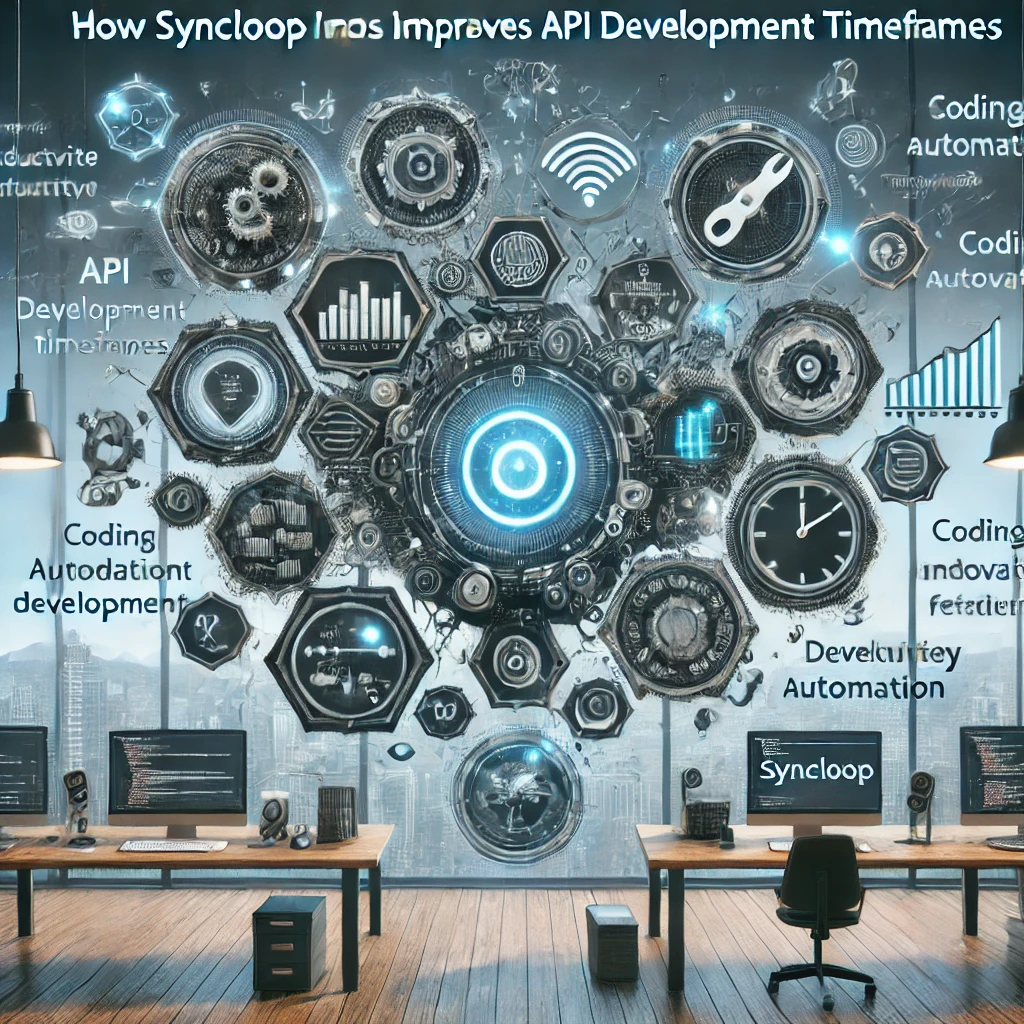How Syncloop Improves API Development Timeframes

Syncloop offers a comprehensive platform that streamlines API development with low-code tools, prebuilt components, and automation features. This blog explores how Syncloop reduces development time and enhances productivity, making it a valuable tool for developers and organizations.
Key Challenges in API Development
- Complexity: Designing, implementing, and maintaining APIs can involve significant technical effort.
- Integration: Connecting APIs with diverse systems and data sources requires extensive coding and configuration.
- Scalability: Building APIs that can handle growth and traffic spikes is time-consuming without the right tools.
- Testing and Debugging: Ensuring APIs function reliably and securely often extends development timelines.
- Documentation: Providing clear and accurate API documentation adds to development overhead.
How Syncloop Reduces API Development Time
1. Low-Code Development
- Create APIs quickly using Syncloop’s intuitive drag-and-drop interface, eliminating the need for extensive manual coding.
2. Prebuilt Templates and Components
- Access a library of prebuilt API templates and reusable components to jumpstart development.
3. Dynamic Data Mapping
- Automate data transformations and mappings with Syncloop’s visual tools, reducing manual effort.
4. Integrated Testing Environment
- Test APIs directly within Syncloop to validate functionality and identify issues early in the development cycle.
5. Seamless Integrations
- Connect APIs to databases, cloud services, and third-party platforms effortlessly using Syncloop’s connectors.
6. Workflow Automation
- Automate repetitive tasks like authentication, logging, and error handling with Syncloop’s workflow builder.
7. Real-Time Monitoring
- Use real-time dashboards to track API performance and resolve bottlenecks proactively.
Benefits of Using Syncloop for API Development
1. Faster Time-to-Market
Accelerate API delivery with low-code tools, prebuilt components, and automated workflows.
2. Improved Productivity
Enable developers to focus on core functionalities by automating repetitive tasks and simplifying integrations.
3. Reduced Errors
Minimize bugs and misconfigurations with built-in testing tools and real-time monitoring.
4. Enhanced Collaboration
Streamline collaboration among developers, product managers, and other stakeholders with a unified platform.
5. Scalable Solutions
Build APIs that scale effortlessly to handle increasing traffic and user demands.
Real-World Applications of Syncloop
1. SaaS Platforms
- Launch APIs for user management, billing, and analytics with rapid development cycles.
2. E-Commerce
- Develop APIs for inventory management, order processing, and payment integration quickly and efficiently.
3. IoT Systems
- Create APIs for device communication, data aggregation, and real-time monitoring with minimal effort.
4. Financial Services
- Deliver secure and scalable APIs for transactions, reporting, and compliance workflows.
5. Healthcare Applications
- Accelerate the creation of APIs for patient records, diagnostics, and appointment scheduling.
Steps to Optimize API Development with Syncloop
Step 1: Define Requirements
- Outline the API’s functionality, endpoints, and data requirements clearly before starting.
Step 2: Leverage Prebuilt Components
- Use Syncloop’s templates and components to reduce coding effort and speed up development.
Step 3: Automate Workflows
- Implement automated workflows for tasks like authentication, error handling, and logging.
Step 4: Test Early and Often
- Use Syncloop’s integrated testing tools to validate APIs during development and catch issues early.
Step 5: Monitor Performance
- Track API performance metrics in real time to identify and resolve potential bottlenecks.
Best Practices for Accelerating API Development
- Plan Ahead: Define clear goals and requirements for the API before starting development.
- Use Low-Code Tools: Leverage Syncloop’s low-code features to minimize manual coding.
- Reuse Components: Build on prebuilt templates and components to save time and ensure consistency.
- Automate Testing: Validate functionality continuously to reduce debugging time later.
- Document Thoroughly: Use Syncloop’s tools to generate clear and comprehensive API documentation.
Conclusion
Syncloop transforms API development by reducing complexity, automating repetitive tasks, and enabling rapid iteration. With features like low-code development, prebuilt components, and real-time monitoring, Syncloop empowers developers to deliver high-quality APIs faster and more efficiently.
Whether building APIs for SaaS platforms, e-commerce, or IoT systems, Syncloop provides the tools to accelerate development and ensure success. Embrace Syncloop to optimize your API workflows and achieve faster time-to-market.
A conceptual visualization of Syncloop-powered API development, showcasing low-code tools, prebuilt components, and dynamic workflows.
Back to Blogs